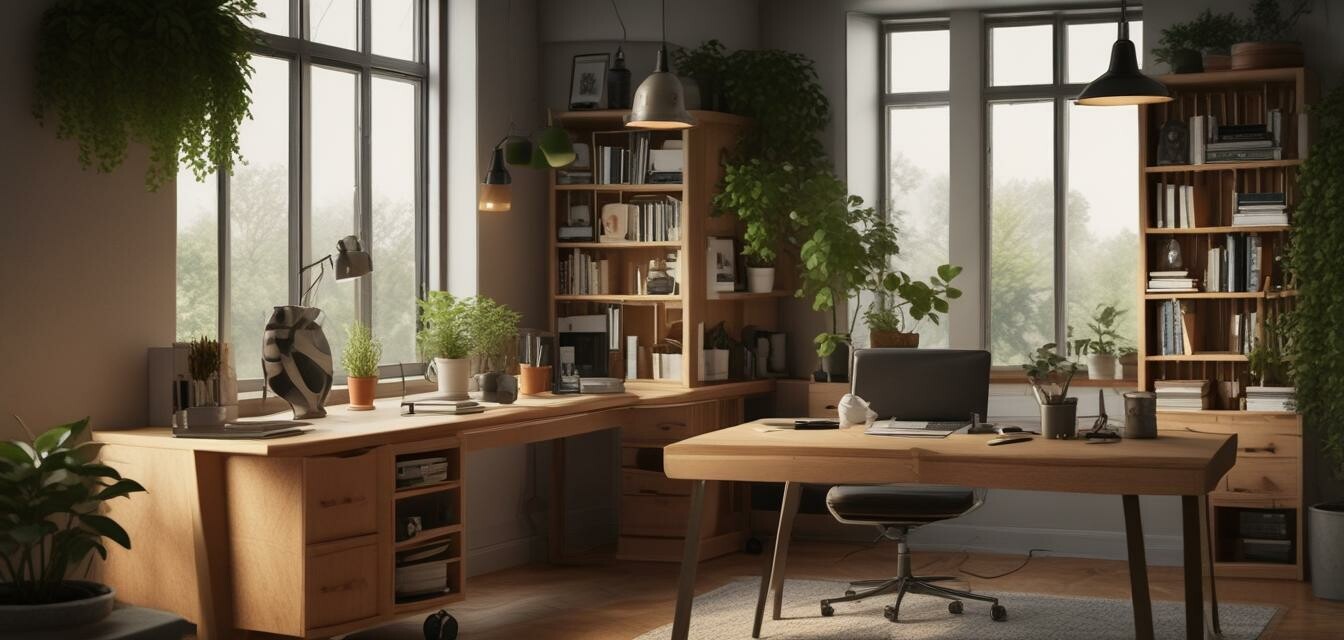
Embracing Sustainable Practices in Home Offices
Key Takeaways
- Sustainable materials and designs are essential for eco-friendly home offices.
- Choosing the right furniture can contribute to a healthier work environment.
- Incorporating greenery enhances both aesthetics and air quality.
- Energy-efficient lighting can significantly reduce electricity consumption.
- Supporting eco-conscious brands boosts sustainability efforts.
As remote working becomes increasingly common, the focus on creating sustainable home offices is gaining momentum. Eco-friendly practices are not just a trend; they are becoming integral to how we design and furnish our workspaces. In this article, we will explore the essential elements of sustainable practices in home offices, highlighting innovative designs and materials that prioritize environmental responsibility.
The importance of sustainability in home office design
Sustainability in home office design is not merely about aesthetics; it's a commitment to making conscious choices that benefit the planet. With the rise in awareness of climate change, consumers are seeking ways to reduce their carbon footprint, even from the comfort of their homes. This shift is prompting manufacturers to innovate and offer eco-friendly options, which align with the values of modern professionals.
Why choose sustainable materials?
Sustainable materials not only promote environmental health but also offer durability and longevity. Here are some reasons to consider using them in your home office:
- Reduced waste: Sustainable materials are often sourced responsibly, minimizing waste and environmental impact.
- Durability: Many sustainable options are built to last, providing long-term value.
- Healthier environment: Non-toxic finishes and materials contribute to better air quality in your workspace.
Elements of a sustainable home office
To create an eco-friendly home office, consider incorporating the following elements:
| Element | Description |
|---|---|
| Recycled materials | Furniture made from recycled wood, metal, or plastic. |
| Energy-efficient lighting | LED bulbs that use less energy and last longer. |
| Natural ventilation | Windows that allow fresh air to circulate, reducing reliance on heating and cooling. |
| Biophilic design | Incorporating plants and natural elements to connect with nature. |
Choosing the right furniture
The furniture in your home office plays a crucial role in creating a sustainable workspace. Look for options that are made from sustainable materials and are designed for longevity. Consider the following factors:
- Look for certifications like FSC (Forest Stewardship Council) to ensure wood products are sustainably sourced.
- Choose modular furniture that can adapt to changing needs, reducing the need to buy new pieces.
- Opt for ergonomic designs to support health and productivity while working from home. Visit our Ergonomic Chairs section to explore more.
Integrating greenery into the workspace
Add a touch of nature to your home office by incorporating plants. They not only beautify the space but also improve air quality. Consider low-maintenance options that thrive indoors:
- Snake Plant
- Pothos
- Peace Lily
- Spider Plant
Explore our ideas on how to enhance your office space by visiting the Tips and Inspiration section. Plants create an inviting atmosphere while positively impacting your focus and productivity.
Energy-efficient lighting solutions
Switching to energy-efficient lighting is another essential sustainable practice. Consider:
| Type of Lighting | Energy Consumption | Longevity | Environmental Impact |
|---|---|---|---|
| Incandescent Bulbs | High | 1,000 hours | High |
| CFL Bulbs | Medium | 10,000 hours | Medium |
| LED Bulbs | Low | 25,000 hours | Low |
Energy-efficient lighting reduces not only your carbon footprint but also saves money on energy bills. Check our Lighting Solutions category for the latest innovations.
Supporting eco-conscious brands
When shopping for home office furniture, choose to support brands that prioritize sustainability in their practices. These companies often use ethically sourced materials, environmentally friendly manufacturing processes, and engage in responsible recycling. Look out for:
- Brands with sustainable certifications.
- Companies that engage in community and environmental initiatives.
- Transparency in sourcing and production.
Conclusion
Embracing sustainable practices in home offices is more than just a trend; it’s a reflection of our commitment to the environment. By choosing eco-friendly materials, incorporating greenery, and supporting responsible brands, we can create workspaces that are not only functional but also kind to our planet. Join the movement towards a greener future, and explore more about sustainable options in our News and Trends section.
Pros
- Contributes to a healthier planet.
- Long-lasting and durable materials.
- Improved air quality through the use of plants.
- Energy savings and reduced bills.
Cons
- May require a higher initial investment.
- Availability of sustainable options may be limited.